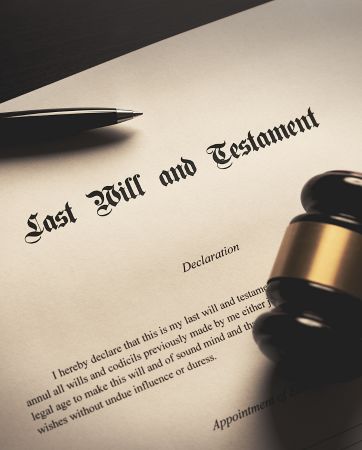Home Management: How to Put Together a Household Budget
It’s no secret that costs of living are rising fast, as plenty of us see continued increases in our energy and grocery bills. While there’s much we can’t control about external factors, there are steps we can take to tackle expenditure in our own homes — and that starts with creating a household budget. We put together five easy ways you can get started today.

Calculate your income
This might sound easy — it could be as simple as checking the right-hand side of your current account — but in reality, a family’s income is usually more complex. It could include social welfare support, maintenance payments, tax or insurance reimbursements and irregular income such as freelance work or overtime. You’ll also need to make sure you’re looking at net income, not gross, which is why it’s helpful to look at your bank statements rather than your payslips. Don’t forget to include any cash payments you receive too.
Take the time to go through all your paperwork and write down everything that appears as a credit to get a complete picture of how much money your family has to work with every month.
Map out your expenditure
When thinking about monthly outgoings, it’s natural to think of mortgage, rent, or debt payments and car or crèche costs first. But often, it’s the smaller outgoings that can really add up, such as entertainment subscriptions or regular meals in cafés or restaurants. It might take some time, but it can be illuminating to go through all your recent receipts and expenditures and add up the total.
Again, your bank statement is a good place to start, but your smartphone may also keep track of your subscriptions in the settings function. The Irish Money Advice and Budgeting Service has a handy My Budget tool that will prompt you to fill in the most common costs like home insurance or fuel charges. It’ll then calculate your income and expenditure in weekly, monthly and yearly amounts. It’s normal for these figures to fluctuate, so once completed, you can save the document and make changes as needed.
Work out your shortfall or excess
You might be surprised how easy it is to spend more than you earn every month — especially if you use overdrafts and credit cards. While everyone can have an unexpectedly expensive month or two, running your household budget with a shortfall every month can potentially lead to costly debt and an erosion of your savings.
Once you’ve calculated your income and expenses, you’ll be left with either a shortfall or an excess. If you have a shortfall, you’ll need to put plans in place to rectify that as soon as possible — increasing your family’s income is one option, but cutting unnecessary spending is usually easier and faster. If you’re lucky enough to have an excess, it may make sense to use it to pay down expensive debt or put it aside in a savings account with your bank or credit union.
Set realistic financial goals
A common approach to personal financial planning is the so-called ‘50/30/20’ rule. This idea originated in the United States, where its supporters advise dividing expenditure into three categories: 50% on needs, 30% on wants and 20% on savings.
While these figures won’t work for everyone, they can help provide a useful approach to setting realistic goals for your family’s household budget. Needs would include necessities like mortgage, rent and car insurance costs, for example. By limiting ‘wants’ to 30%, you can curtail discretionary spending, and splash out only on what matters most to you. If you can afford to set aside savings, this can be very useful protection against ‘rainy days’ such as car repairs or personal illness.
However you choose to approach it, it’s important that you use the information you’ve gathered in your household budget to put plans in place to get your family into the most comfortable financial situation possible.
Share your budget and plan

It’s never too early to teach children financial responsibility, even if it’s just sharing the idea of a household budget. You don’t have to discuss every aspect of what’s driving the change, but you can encourage everyone in the house to do their part by reducing electricity usage or preparing packed lunches. Keeping a physical piggy bank can help family members visualise the benefits of putting a little away every week for a trip to the cinema or a visit to the zoo.
By involving your partner or family, you can help to keep your household budget and long-term goals on track. Don’t forget to update it regularly to reflect increases or decreases in income and expenditure and make adjustments where necessary. In the summer, for example, as home heating costs drop, it might be a good idea to set those savings aside to offset big energy bills next year.
Every home is different, with all the challenges and opportunities that make family life unique. By creating your own household budget, you can get a clear picture of what you’re dealing with and put a reassuring plan in place to take charge of your family’s financial future.
For additional advice and guidance, contact the Money Advice and Budgeting Service on their free helpline, available 9am-8pm, Monday to Friday.
At An Post Insurance, we’ve been serving the Irish public since 1999, offering home insurance cover and care for more than two decades. That means affordable insurance protection that helps keep your family protected in tough times as well as good times. To learn more about our great range of products and services, visit our website or talk to our friendly team — we’re always on hand with advice you can trust and help you can rely on.
All the information on this blog is published in good faith and for general information purpose only. While An Post Insurance makes every effort to ensure that the information appearing on this blog is accurate and complete, it does not make any warranties about the completeness, reliability or accuracy of this information, whether express or implied, including but not limited to implied warranties of merchantability, fitness for a particular purpose or non-infringement. Any action you take upon the information you find on this blog is strictly at your own risk. An Post Insurance will not be liable for any direct, indirect or consequential losses and/or damages in connection with the use of, or action taken in reliance on information contained in our blog.
Through this website you are able to link to other websites which are not under the control of An Post Insurance. We have no control over the nature, content and availability of those sites and if you click on links to these websites you will be subject to the terms and conditions of those sites. The inclusion of any links does not necessarily imply a recommendation or endorse the views expressed within them.



















